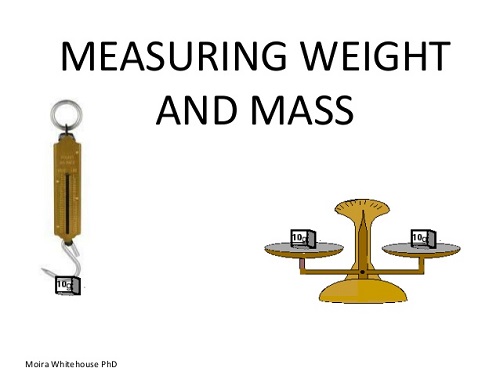Free fall and projectile motion are two very important concepts that are essential in understanding how objects in the world move around us. These concepts are fundamental in understanding motion and dynamics. Engineers and physicists use them when designing and analyzing systems involving objects in motion, like designing roller coasters or predicting the trajectory of a projectile.
Free fall and projectile motion are often used as examples in physics courses to teach fundamental concepts like acceleration, velocity, and gravity. They provide a basis for more complex topics in physics. Let’s understand the intriguing link and similarities between free fall and projectile motion.
Read on to learn more!

What is Free Fall?
Free fall is when something falls only under the force of gravity, like dropping a pen. When you throw something up, it goes up for a while, and then gravity pulls it back down. That part where it’s coming back down is free fall. In simple terms, free fall is when an object moves under the influence of gravity and nothing else. Think of it as a natural “falling” mode, where gravity is doing all the work.
In astronomy, the concept of free fall is crucial in understanding the motion of celestial bodies in space, such as planets orbiting the sun or satellites orbiting Earth. It helps you understand how things behave when they’re simply dropping due to gravity.

What is Projectile Motion?
Projectile motion is like when you throw a ball or any object into the air. It has two parts: horizontal motion (side-to-side) and vertical motion (up and down). Now, the vertical part is where it connects to free fall. It’s like when you throw a ball and it follows a curved path through the air. It helps you understand how things like rockets, sports balls, and even objects in nature, like a bird in flight, move through the air.
In sports like baseball, cricket, and golf, players use the principles of projectile motion to calculate the trajectory of a ball when hitting or throwing it. Understanding these concepts can help athletes improve their accuracy and performance. It also plays a role when studying the paths of objects launched into space.
Similarities between Free Fall and Projectile Motion
Common Force of Gravity
Both free fall and projectile motion have something in common: gravity. Gravity is the force that’s at work in both cases. When an object is in free fall, like when you drop a book, gravity is what’s making it fall straight down. In projectile motion, gravity is also pulling the object, but here it’s interesting because gravity affects both the horizontal (side-to-side) and vertical (up-and-down) parts of its motion.
Acceleration Due to Gravity
Both involve objects speeding up as they fall. This happens because of something called acceleration due to gravity. Simply put, when things fall, they get faster and faster. So, whether you’re just dropping something or launching it with a slingshot, they both experience this speeding-up effect due to gravity.
Vertical Motion
In both free fall and projectile motion, things go up and then come back down. When you toss a ball into the air, it goes up for a while and then comes back down. Even in free fall, an object starts at rest, but gravity makes it attain speed as it falls downward. So, the vertical motion in both cases is because of gravity pulling things down to Earth.
Curved Trajectory
Both follow a curved path. In free fall, the object falls straight down, but because it starts from rest and gravity makes it go faster, its path curves. In projectile motion, the object’s path is a more pronounced curve because it’s moving both horizontally and vertically at the same time. This curved trajectory is a key feature of both free fall and projectile motion, and it’s a result of how gravity affects their motion.
Summary
In a nutshell, free fall is what happens when something drops because of gravity, like when you let go of a balloon or drop a ball from your hand. It’s when an object falls freely without anything else pushing or pulling on it. Projectile motion is when an object is launched into the air and moves in a curved path. This happens because two things are going on at the same time: it’s moving horizontally (like how a car drives) and vertically (like how you throw a ball up and down).
FAQs
What law is applied in free fall and projectile motion?
Newton’s Law of Universal Gravitation plays a pivotal role in both cases. This law states that every mass attracts every other mass with a force that is directly proportional to the product of their masses and inversely proportional to the square of the distance between them.
Why is free fall a special case of projectile motion?
Free fall is a simplified concept; it states that an object is only moving vertically under the influence of gravity without any initial horizontal velocity. So, free fall is a subset of projectile motion where only the vertical component is involved.
Is a free-falling object a projectile?
Yes, a free-falling object can be considered a type of projectile. A projectile is any object launched into the air and influenced by gravity.
What acceleration do projectiles and objects in free fall experience?
Both projectiles and objects in free fall experience acceleration due to gravity. This acceleration is approximately 9.80 meters per second squared (m/s²) near the surface of the Earth and is commonly denoted as “g.” It causes objects to speed up as they fall downward.
What is the motion of falling objects and a projectile?
Both involve two main components: horizontal and vertical motion. In both cases, objects move vertically due to the force of gravity, either falling straight down (free fall) or following a curved path (projectile motion). In free fall, however, the horizontal motion is negligible because there’s no initial horizontal velocity.












Leave a Reply